#mollusk fossil
Explore tagged Tumblr posts
Photo

Fossil Gastropods – Ampullina & Clavilithes willemetti (Dehayes) – Middle Eocene, Lutetian – Mourne, Damery, France
Authentic Fossil Gastropods – Ampullina & Clavilithes willemetti (Dehayes) – Middle Eocene, Lutetian – Mourne, Damery, France
About the Fossils:
This is a high-quality fossil gastropod specimen featuring Ampullina and Clavilithes willemetti (Dehayes), preserved from the Middle Eocene Lutetian stage (~48-41 million years ago). These beautifully fossilized marine snails were part of an ancient warm-sea ecosystem that flourished in what is now Mourne, Damery, France.
The Ampullina genus is known for its rounded, smooth shell structure, while Clavilithes willemetti features a more elongated, ornate form. These gastropods belonged to the rich and diverse marine fauna of the Eocene epoch, thriving in tropical and subtropical seas.
Geology & Formation:
Geological Age: Middle Eocene, Lutetian (~48-41 million years ago)
Formation: Marine sedimentary deposits
Location: Mourne, Damery, France
Preservation: Excellent fossilization, showcasing intricate shell details
Why This Fossil?
✔ 100% Genuine Specimen – Comes with a Certificate of Authenticity
✔ Highly Collectible – From the renowned Alice Purnell Collection
✔ Perfect for Display or Study – Ideal for fossil collectors, students, and paleontology enthusiasts
✔ Scale Rule/Cube = 1cm – See photos for full sizing
The fossil in the photo is the exact specimen you will receive!
Secure Packaging & Fast Shipping – Your fossil will be carefully packed for a safe journey!
#Fossil Gastropods#Ampullina fossil#Clavilithes willemetti#Eocene gastropod#Lutetian fossil#Mourne fossils#Damery fossils#France fossils#marine fossils#prehistoric shell#mollusk fossil#fossilized snail#rare gastropod#paleontology#fossil collection#fossil hunting#ammonite collection#genuine fossil#Alice Purnell Collection
2 notes
·
View notes
Text
Researchers have unearthed two fossils, named Punk and Emo, revealing that ancient mollusks were more complex and adaptable than previously known. Mollusks are one of life's most diverse animal groups and analysis of the rare 430 million-year-old fossils is challenging long-held views on their early origins.
Continue Reading.
2K notes
·
View notes
Text
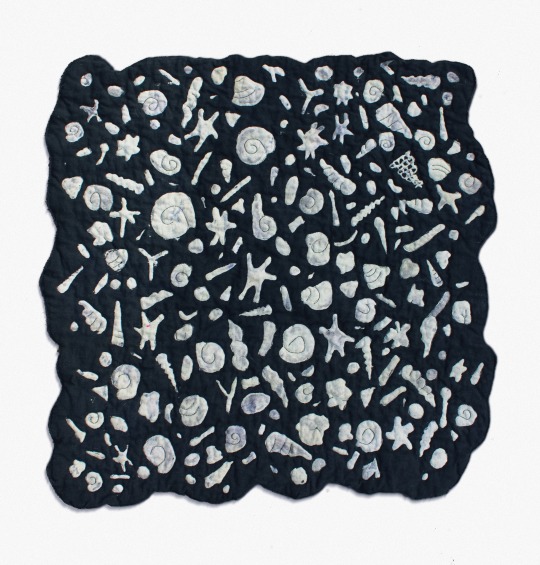
thankful for the gift of a new sewing machine that allows me to do more than a simple straight stitch… feeling like i’m back at SAIC with the ability to learn a new machine. my first time free motion quilting + doing a satin stitch edge! the bleach painting is of magnified coral sand filled with foraminifera, bits of calcium shells from mollusks, and coral skeletons
Precipitation Constellation
Decolorant print on denim, walnut dyed backing, cotton batting and cotton thread
846 notes
·
View notes
Text
Now here are the finished pendants, available in toto:










#polymer clay#glow in the dark#fossils#pendants#invertibrates#ammonite#orthoceras#argonaut#crinoid#trilobite#fairy coin#sea lily#arthropod#mollusk
23 notes
·
View notes
Text
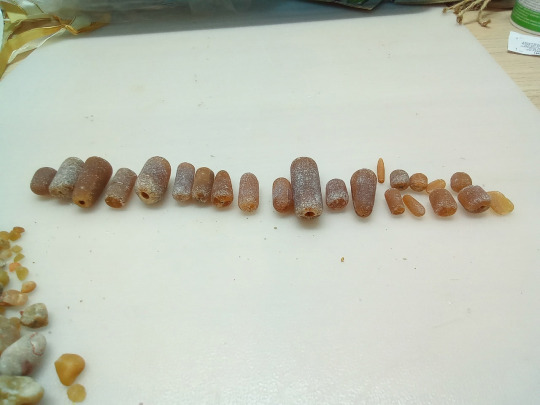
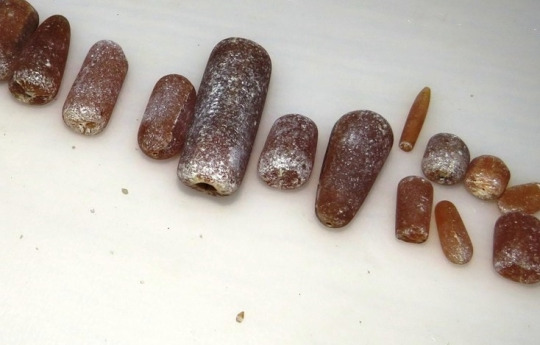
What we took for a stone bead from the sea turned out to be a fossilized mollusk, a belemnite, known as "devil's finger", "gnome candle", "dragon's tooth", "Perun's arrow", etc. Today we went down the boulders to the shore and found a whole scattering of them. They are about 150 million years old.
Belemnite can be crushed or grated and applied to wounds. It helps to quickly heal wounds without scars, as well as get rid of acne and other cosmetic problems.
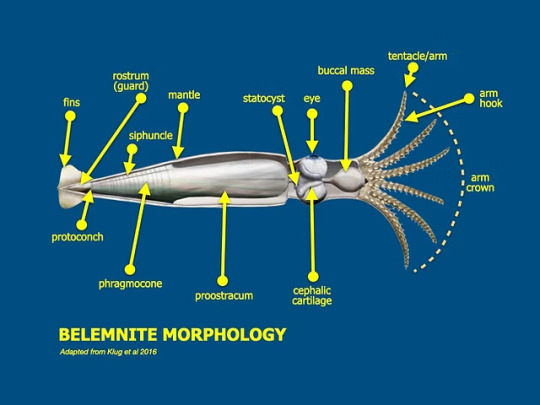
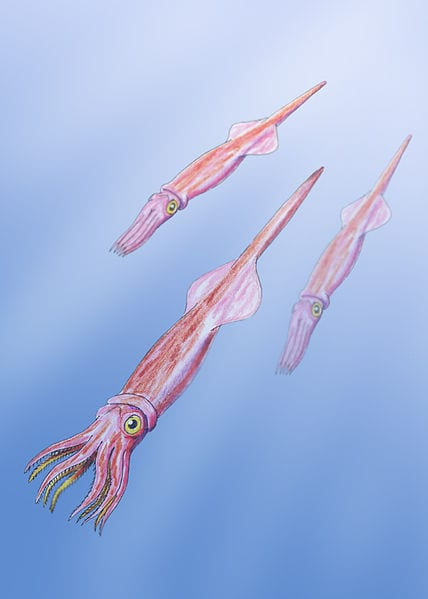
7 notes
·
View notes
Text

!! SNAILERT !! 🚨🚨🚨 A CUTE BOOGER !
14 notes
·
View notes
Text
Praise be

Omastar - Testasenex spiculum
Full print available here!
#pokemon#digital art#art#my art#nintendo#pokemon art#pkmn#pkmn art#kanto#fossil#fossils#fossil pokemon#ammonite#molluscs#mollusk#mollusk pokemon#omanyte#omanyte art#omastar#omastar art#water type#rock type#cephalopod#fan art
45 notes
·
View notes
Text






Yesterday my search was crowned with success! The photo shows various mollusks that lived in the Eocene.


7 notes
·
View notes
Text

orange sea shell 2024
#sea shell#shell#mollusk#ocean life#fossil#dope#intersting#nature#simple#intricate#beautiful#pattern#natrual#found object#photo#art
5 notes
·
View notes
Photo

Fossil Gastropods – Ampullina & Voluta willemett – Middle Eocene, Lutetian – Mourne, Damery, France
Authentic Fossil Gastropods – Ampullina & Voluta willemett – Middle Eocene, Lutetian – Mourne, Damery, France
About the Fossils:
This is a high-quality fossil gastropod specimen featuring Ampullina and Voluta willemett, preserved from the Middle Eocene Lutetian stage (~48-41 million years ago). These beautifully fossilized marine snails were part of an ancient warm-sea ecosystem that thrived in what is now Mourne, Damery, France.
The Ampullina genus is known for its rounded, smooth shell structure, while Voluta willemett exhibits an elongated, spiral form typical of predatory volute gastropods. These marine snails lived in shallow tropical and subtropical waters, contributing to the biodiversity of the Eocene period.
Geology & Formation:
Geological Age: Middle Eocene, Lutetian (~48-41 million years ago)
Formation: Marine sedimentary deposits
Location: Mourne, Damery, France
Preservation: Excellent fossilization, showcasing intricate shell details
Why This Fossil?
✔ 100% Genuine Specimen – Comes with a Certificate of Authenticity
✔ Highly Collectible – From the renowned Alice Purnell Collection
✔ Perfect for Display or Study – Ideal for fossil collectors, students, and paleontology enthusiasts
✔ Scale Rule/Cube = 1cm – See photos for full sizing
The fossil in the photo is the exact specimen you will receive!
Secure Packaging & Fast Shipping – Your fossil will be carefully packed for a safe journey!
#Fossil Gastropods#Ampullina fossil#Voluta willemett#Eocene gastropod#Lutetian fossil#Mourne fossils#Damery fossils#France fossils#marine fossils#prehistoric shell#mollusk fossil#fossilized snail#rare gastropod#paleontology#fossil collection#fossil hunting#ammonite collection#genuine fossil#Alice Purnell Collection
1 note
·
View note
Text
A team of researchers including scientists from the University of Oxford have made an astonishing discovery of a new species of mollusk that lived 500 million years ago. The new fossil, called Shishania aculeata, reveals that the most primitive mollusks were flat, shell-less slugs covered in a protective spiny armor. The findings have been published in the journal Science. The new species was found in exceptionally well-preserved fossils from eastern Yunnan Province in southern China dating from a geological period called the early Cambrian, approximately 514 million years ago. The specimens of Shishania are all only a few centimeters long and are covered in small spikey cones (sclerites) made of chitin, a material also found in the shells of modern crabs, insects, and some mushrooms.
Continue Reading.
63 notes
·
View notes
Text
Have you considered that the time tables are just wrong(again)
NEW FISH JUST DROPPED
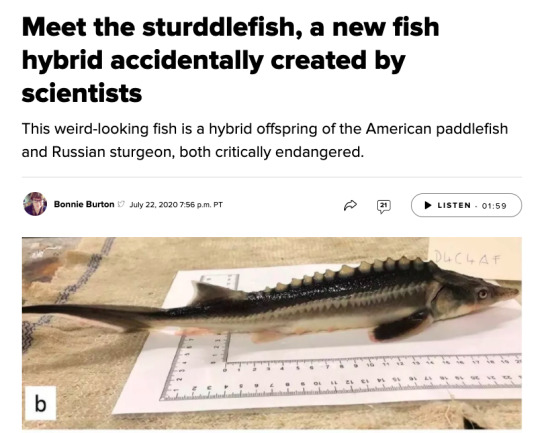
#Coelacanth#Monoplacophoran Mollusks#Lazarus taxon in general#living fossils#Ever think maybe they are just really bad at this timescale stuff?#Funny fish story though#very cool fish!
141K notes
·
View notes
Text
Pt 2, the actual mold-making. Behold, my exoskeletal childrens






#moldmaking#fossils#invertibrates#ammonite#argonaut#orthoceras#trilobite#crinoid#fairy coin#arthropod#nautiloid#mollusk
11 notes
·
View notes
Text
I recently found out a show I liked is 10 years old now so to not be the oldest thing on this blog I'm talking coelacanths for Wet Beast Wednesday. Coelacanths are rare fish famed for being living fossils. While that term is highly misleading, it is true that coelacanths are among the only remaining lobe-fined fish and were thought to have gone extinct millions of years ago before being rediscovered in modern times.
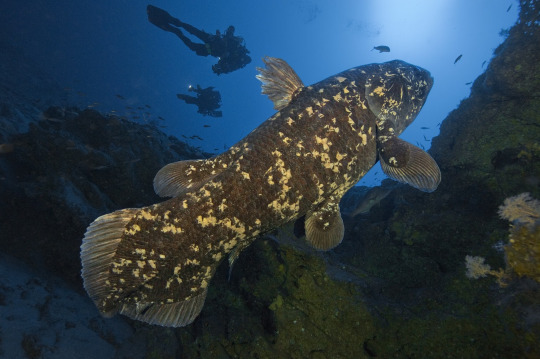
(image id: a wild coelacanth. It is a large, mostly grey fish with splotches of yellowish scales. Its fins are attached to fleshy lobes. It is seen from the side, facing the top right corner of the picture)
Coelacanth fossils had been known since the 1800s and they were believed to have gone extinct in the late Cretaceous period. That was until December 1938, when a museum curator named Marjorie Courtenay-Latimer was informed of an unusual specimen that had been pulled in by local fishermen. After being unable to identify the fish, she contacted a friend, ichthyologist J. L. B. Smith, who told her to preserve the specimen until he could examine it. Upon examining it early next year, he realized it was indeed a coelacanth, confirming that they had survived, undetected, for 66 million years. Note that fishermen living in coelacanth territory were already aware of the fish before they were formally described by science. Coelacanths are among the most famous examples of a lazarus taxon. This term, in the context of ecology and conservation, means a species or population that is believed to have gone extinct but is later discovered to still be alive. While coelacanths are among the oldest living lazarus taxa, they aren't the oldest. They are beaten out by a genus of fly (100 million years old) and a type of mollusk (over 300 million years old).

(image: a coelacanth fossil. It is a dark brown imprint of a coelacanth on white rock. Its skeleton is visible in the imprint)
Coelacanths are one of only two surviving groups of lobe-finned fish along with the lungfishes. Lobe-finned fish are bony fish notable for their fins being attached to muscular lobes. By contrast, ray-finned fish (AKA pretty much every fish you've ever heard of that isn't a shark) have their fins attached directly to the body. That may not sound like a big difference, but it actually is. The lobes of lobe-finned fish eventually evolved into the first vertebrate limbs. That makes lobe-finned fish the ancestors of all reptiles, amphibians, and mammals, including you. In fact, you are more closely related to a coelacanth than a coelacanth is to a tuna. Coelacanths were thought to be the closest living link to tetrapods, but genetic testing has shown that lungfish are actually closer to the ancestor of tetrapods.
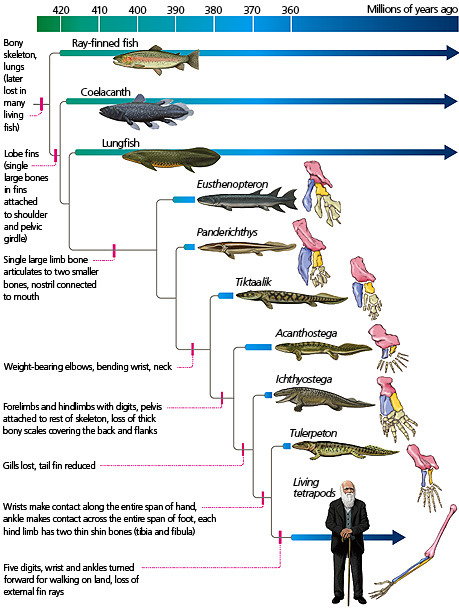
(image id: a scientific diagram depicting the taxonomic relationships of early lobe-finned fish showing their evolution to proto-tetrapods like Tiktaalik and Ichthyostega, to true tetrapods. Source)
There are two known living coelacanth species: the west Indian ocean coelacanth (Latimeria chalumnae) and the Indonesian coelacanth (L. menadoensis). Both are very large fish, capable of exceeding 2 m (6.6 ft) in length and 90 kg (200 lbs). Their wikipedia page describes them as "plump", which seems a little judgmental to me. Their tails are unique, consisting of two lobes above and below the end of the tail, which has its own fin. Their scales are very hard and thick, acting like armor. The mouth is small, but a hinge in its skull, not found in any other animal, allows the mouth to open extremely wide for its size. In addition, they lack a maxilla (upper jawbone), instead using specialized tissue in its place. They lack backbones, instead having an oil-filled notochord that serve the same function. The presence of a notochord is the key characteristic of being a chordate, but most vertebrates only have one in embryo, after which it is replaced by a backbone. Instead of a swim bladder, coelacanths have a vestigial lung filled with fatty tissue that serves the same purpose. In addition to the lung, another fatty organ also helps control buoyancy. The fatty organ is large enough that it forced the kidneys to move backwards and fuse into one organ. Coelacanths have tiny brains. Only about 15% of the skull cavity is filled by the brain, the rest is filled with fat.
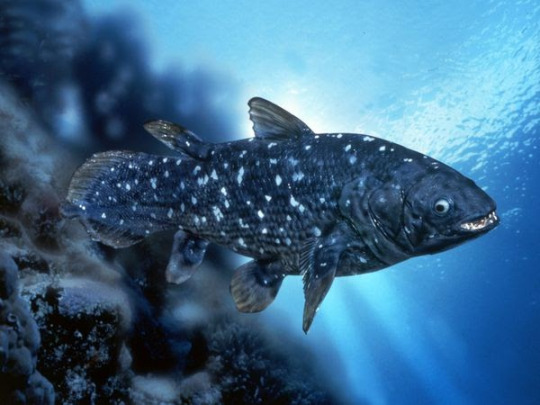
(image id: a coalacanth. It is similar to the one on the above image, but this one is blue in color and the head is seen more clearly, showing an open mouth and large eye)
One of the reasons it took so long for coelacanths to be rediscovered is their habitat. They prefer to live in deeper waters in the twilight zone, between 150 and 250 meters deep. They are also nocturnal and spend the day either in underwater caves or swimming down into deeper water. They typically stay in deeper water or caves during the day as colder water keeps their metabolism low and conserves energy. While they do not appear to be social animals, coelacanths are tolerant of each other's presence and the caves they stay in may be packed to the brim during the day. Coelacanths are all about conserving energy even when looking for food. They are drift feeders, moving slowly with the currents and eating whatever they come across. Their diet primarily consists of fish and squid. Not much is known about how they catch their prey, but they are capable of rapid bursts of speed that may be used to catch prey and is definitely used to escape predators. They are believed to be capable of electroreception, which is likely used to locate prey and avoid obstacles. Coelacanths swim differently than other fish. They use their lobe fins like limbs to stabilize their movements as they drift. This means that while coelacanths are slow, they are very maneuverable. Some have even been seen swimming upside-down or with their heads pointed down.
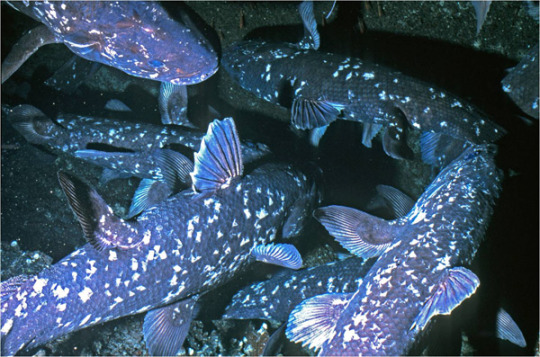
(image: an underwater cave wilt multiple coelacanths residing in it. 5 are clearly visible, with the fins of others showing from offscreen)
Coelacanths are a vary race example of bony fish that give live birth. They are ovoviviparous, meaning the egg is retained and hatches inside the mother. Gestation can take between 2 and 5 years (estimates differ) and multiple offspring are born at a time. It is possible that females may only mate with a single male at a time, though this is not confirmed. Coelacanths can live over 100 years and do not reach full maturity until age 55. This very slow reproduction and maturation rate likely contributes to the rarity of the fish.
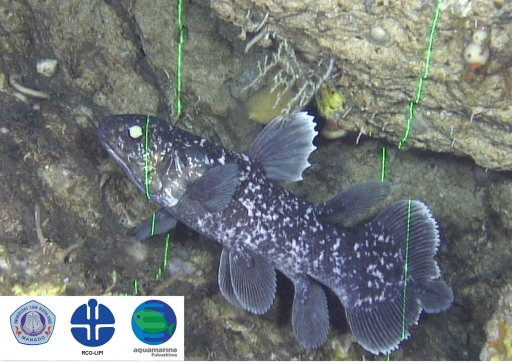
(image: a juvenile coelacanth. Its body shape is the same as those of adults, but with proportionately larger fins. There are green laser beams shining on it. These are used by submersibles to calculate the size of animals and objects)
Coelacanths are often described as living fossils. This term refers to species that are still similar to their ancient ancestors. The term is losing favor amongst biologists due to how misleading it can be. The term os often understood to mean that modern species are exactly the same as ancient ones. This is not the case. Living coelacanth are now known to be different than those who existed during the Cretaceous, let alone the older fossil species. Living fossils often live in very stable environments that result in low selective pressure, but they are still evolving, just slower.
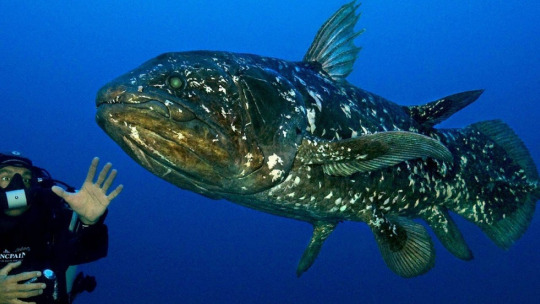
(image: a coelacanth swimming next to a SCUBA diver)
Because of the rarity of coelacanths, it's hard to figure out what conservation needs they have. The IUCN currently classifies the west Indian ocean coelacanth as critically endangered (with an estimated population of less than 500) and the Indonesian coelacanth as vulnerable. Their main threat is bycatch, when they are caught in nets intended for other species. They aren't fished commercially as their meat is very unappetizing, but getting caught in nets is still very dangerous and their slow reproduction and maturation means that it is long and difficult to replace population losses. There is an international organization, the Coelacanth Conservation Council, dedicated to coelacanth conservation and preservation.
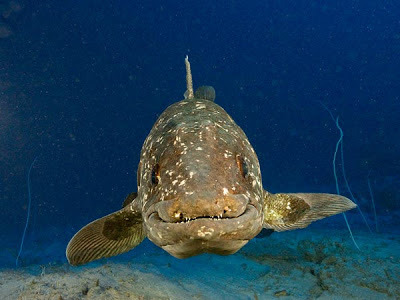
(image: a coelacanth facing the camera. The shape of its mouth makes it look as though it is smiling)
#wet beast wednesday#coelacanth#marine biology#biology#zoology#ecology#animal facts#fish#fishblr#old man fish#lobe-finned fish#sarcopterygii
1K notes
·
View notes
Text
Round 3 - Chondrichthyes - Heterodontiformes




(Sources - 1, 2, 3, 4)
While several extinct genera of Heterodontiformes are known from the Jurassic, today only one genus, Heterodontus, the “Bullhead Sharks” remains. Ten living species of bullhead shark have been described.
Bullhead sharks are relatively small, with the largest species reaching just 1.65 metres (5.5 ft) in maximum length. They have tapered bodies, with blunt, proportionally large heads, relatively small mouths, pig-like snouts, and pronounced ridges above their eyes. They have two large dorsal fins, the first larger than the second, and an anal fin. Both dorsal fins have a rigid spine at the front of each fin which is used for defense. Bullhead Sharks are bottom feeders in tropical and subtropical waters. They have cusped grasping teeth at the front of the mouth, and flattened teeth at the back of the mouth. They use the flattened teeth at the back of their mouth to crush hard-shelled prey like bivalves, crustaceans, and sea urchins, and the grasping teeth on soft-bodied prey like worms, anemones, and octopuses. They hunt at night by "walking" along the sea floor with alternating motions of their pectoral and pelvic fins.
Bullhead shark egg cases are shaped like an auger, with two spiral flanges. This allows the egg cases to become wedged in the crevices of rocky sea floors, where the eggs are protected from predators; however, some bullhead sharks deposit their eggs on sponges or seaweed. Due to their spiral shape, each egg case requires several hours to rotate out of the mother shark's cloaca (Oof). She usually lays two at a time. The eggs typically hatch after 7 to 12 months, depending on the species. The pups will usually reach over 14 cm in length by the time they leave the egg case.
The Heterodontiforms appear in the fossil record in the Early Jurassic, with modern forms appearing in the Late Jurassic. Despite the very ancient origins of the genus, phylogenetic evidence indicates that all living species in the genus arose from a single common ancestor that survived the K-Pg extinction.

Propaganda under the cut:
Female Japanese Bullhead Sharks (Heterodontus japonicus) are known to deposit their eggs in communal nests, with as many as 15 eggs left in the same nest.
Horn Sharks (Heterodontus francisci) (image 2) have relatively small territories they hunt in at night, returning to the same “house” during the day. They may remain faithful to the same territory for over a decade. Now that’s a homebody.
Horn Sharks are queued by light rather than by an internal clock. In laboratory settings, they will become active as soon as lights are turned off. If they are in the middle of something when the lights are turned on, they may stop swimming and sink to the bottom. In one experiment where the sharks were kept in darkness, they remained continuously active for 11 days before slowing from fatigue. (☹️)
The Horn Shark generates the highest known bite force relative to its size of any shark, which it uses to crack into mollusks, echinoderms, and crustaceans. One study found the average bite force for this species in the wild to be 95 N with a maximum of 135 N, while under experimental conditions sharks could be induced to bite with over 200 N of force.
Female Horn Sharks in the wild pick up their egg cases in their mouths and wedge them into crevices to keep them safe.
In July 2018, three people were arrested after stealing a juvenile Horn Shark from the San Antonio Aquarium. The shark was scooped out of its tank and smuggled out of the aquarium in a stroller, wrapped in a wet blanket. It was thankfully returned unharmed two days later.
The Crested Bullhead Shark (Heterodontus galeatus) (image 4) produces spiral-shaped egg capsules that are secured to seaweed or sponges with long tendrils.
The Crested Bullhead Shark is a major predator of the eggs of the Port Jackson Shark! Individual sharks have been observed taking the egg capsules in their mouths and chewing on the tough casing, rupturing it and allowing the yolk to be sucked out, or simply swallowing the capsules whole.
The Port Jackson Shark (Heterodontus portusjacksoni) (image 1) is a migratory species, traveling south in the summer and returning north to breed in the winter. Males tend to arrive to the breeding grounds first with the females arriving later and staying later, perhaps as a means to reduce egg predation upon their newly laid eggs.
While juvenile Port Jackson Sharks are not particularly social, adults are often seen resting in caves in groups, and prefer to associate with specific sharks based on sex and size. In lab settings, these sharks were shown to have unique personality traits and preferences, can be trained, can count, and can learn by watching other sharks.
66 notes
·
View notes
